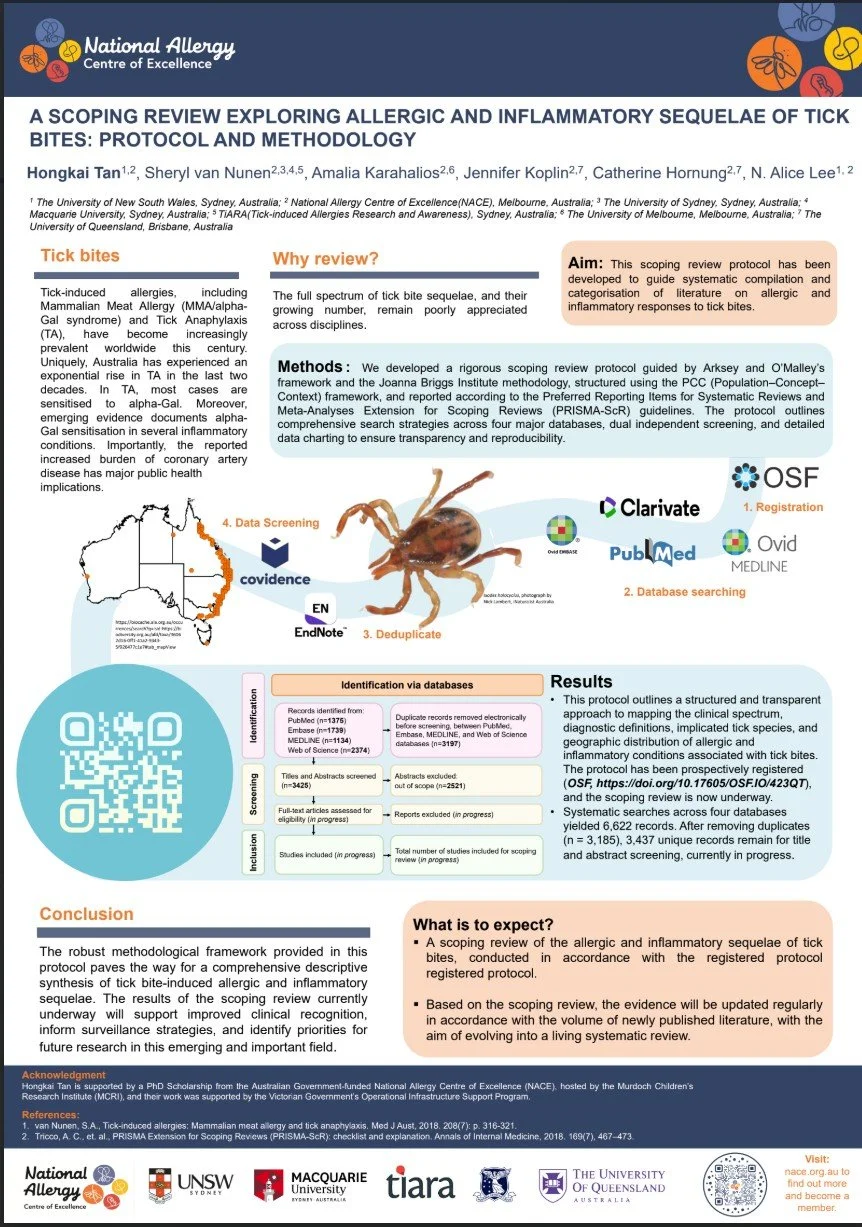A SCOPING REVIEW EXPLORING ALLERGIC AND INFLAMMATORY SEQUELAE OF TICK BITES: PROTOCOL AND METHODOLOGY
A SCOPING REVIEW EXPLORING ALLERGIC AND INFLAMMATORY SEQUELAE OF TICKBITES: PROTOCOL AND METHODOLOGY
Hongkai Tan1,2, Sheryl van Nunen 2,3,4,5, Amalia Karahalios 2,6 , Jennifer Koplin 2,7, Catherine Hornung 2,7, N. Alice Lee 1, 2 The University of New South Wales, Sydney, Australia; 2 National Allergy Centre of Excellence (NACE), Melbourne, Australia; 3 The University of Sydney, Sydney, Australia; 4 Macquarie University, Sydney, Australia; 5 TiARA(Tick-induced Allergies Research and Awareness), Sydney, Australia; 6 The University of Melbourne, Melbourne, Australia; 7 The University of Queensland, Brisbane, Australia
Tick-induced allergies, including Mammalian Meat Allergy (MMA/alpha- Gal syndrome) and Tick Anaphylaxis (TA), have become increasingly prevalent worldwide this century. Uniquely, Australia has experienced an exponential rise in TA in the last two decades. In TA, most cases are sensitised to alpha-Gal. Moreover, emerging evidence documents alpha- Gal sensitisation in several inflammatory conditions. Importantly, the reported increased burden of coronary artery disease has major public health implications.
Why review?
The full spectrum of tick bite sequelae, and their growing number, remain poorly appreciated
across disciplines.
Aim:
This scoping review protocol has been developed to guide systematic compilation and
categorisation of literature on allergic and inflammatory responses to tick bites.

